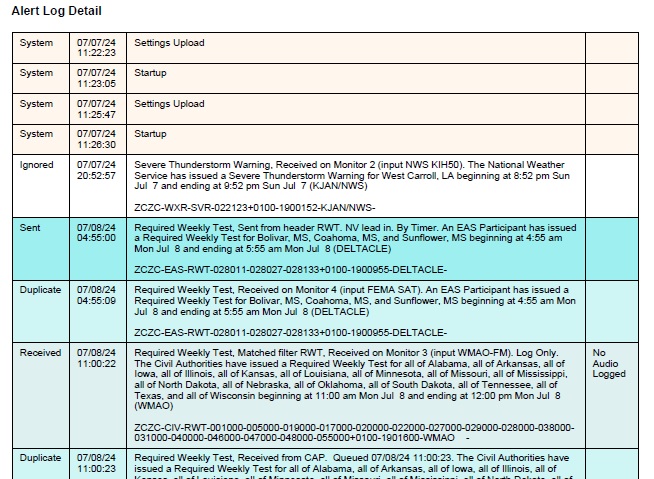Bill Traue, CSRE, 8-VSB, AMD is principal of Bill Traue Technical Services. He acknowledges that when it comes to fixing dead switched-mode power supplies, the small wall-wart or line-lump type aren’t worth the effort because a replacement will cost less than the time required to inspect and attempt a repair. Also, like most broadcast engineers, Bill keeps a crate full of spare low-power supplies.
However, when an intermediate- or large-size switched-mode supply fails, we may see all those electrolytic capacitors neatly packed inside and suspect that one or more of them is the cause of failure, given that electrolytics can be unreliable in the long term due to their tendency to dry out, drop in value or suffer from increased equivalent series resistance or ESR.

It’s hard to resist the urge to replace them all and hope for the best. But you may buy replacement caps and invest a couple of hours in replacing them, only to find that the supply still won’t come to life. At this point we have forgotten Gershwin’s Law: It ain’t necessarily so.
Why? For one thing, our replacement caps may not have certain unique characteristics that were required of the original parts. Also, other components may be damaged — ICs may have their tops blown off or an inductor may have been damaged from overheating. Unfortunately, most of the time you won’t have a schematic diagram or service manual, often because the manufacturer refuses to provide one.
Before trying the “shotgun” cap replacement route, try what one of Bill’s colleagues did: Apply heat from a hair blow dryer directly to the caps.
Electrolytic caps are chemical devices, and heat speeds up chemical reactions. You may find that the supply will run after the heat styling. Bill recommends that you have the supply powered up and in circuit while trying this, to give the supply the best chance of starting.

If your “heat styling” works and the supply starts to run, don’t shut it down until you have the replacement supply on hand.
Bill notes that if the blow dryer does start the supply, it’s safe to assume that the capacitors are the root of the problem. If other components were faulty, the supply would not start. Be glad you got the supply running, at least for a while, and order the replacement. Replace the electrolytics if you want to, but remember Gershwin’s Law.
When Bill orders a bunch of new capacitors from a parts house, he measures each one for capacitance value and equivalent series resistance before installing it. Bill has found failures even among new caps. And once you find one, you will be sure to measure every capacitor. Bill adopted this measurement technique for fuses, too –—you can’t tell by looking at them.
I asked Bill for some applications and he mentioned the small switching supply used in the BE AM 2.5 kW transmitter. It’s the same supply used in their FM30T. Bill says he has revived both types with a hair dryer. This is great if you don’t have a spare on hand, but those supplies are available from big parts houses at reasonable prices, so it’s silly not to have one sitting on the shelf.
Although engineers are in the business of fixing things — it’s in our DNA — one of the skills we need to adopt is to know when to feed a supply to the dumpster.
About ESR
Equivalent series resistance is what a capacitor can apply to alternating current. As capacitors age, ESR increases, a characteristic that can cause a variety of issues.
A high ESR value will degrade performance due to increased noise, a higher voltage drop across the capacitor and I²R power losses. Heat generated by high ESR can not only degrade capacitor life but also create circuit performance issues as the switched-mode power supply voltage can fluctuate. Switched-mode supplies are known for stable output voltages, so if that stable voltage fluctuates, it can have negative effects on the circuit that the supply is powering.
There’s a useful discussion of ESR here.

Guard your ceramic capacitors
Benjamin F. Dawson III, P. E., of Hatfield & Dawson Consulting Engineers tells us that new ceramic transmitting capacitors for AM directional upgrade projects have been difficult to obtain. In many cases, project managers have had to use refurbished or recycled components due to cost and/or availability. Keep that in mind if you’re planning an AM upgrade project; add in extra time for completion.
The Hatfield & Dawson website has a variety of technical articles and downloads that Workbench readers will find useful. Head to the Resources tab here.
EAS timesaver
Larry Fuss is a legend in broadcast circles: owner of multiple stations, engineer and manager.
He writes that if you have a Sage EAS unit, you can now receive an automatic weekly email with all EAS activity for the week, complete with a place for the chief operator to sign (see attached log photo). Larry made this suggestion to Harold Price, the president of Sage, who liked the idea and has now implemented it.
This eliminates all the hand-written logs each week, and ensures that you’re keeping accurate records.

You can enable the feature at the bottom left of the Email-FTP tab in ENDECSET. You may need to download the latest version of ENDECSET to make this change.
Once you’ve made the change you save the file and upload it to your Sage unit.
What a great time-saver for busy engineers.
Workbench submissions are encouraged and qualify for SBE recertification credit. Email johnpbisset@gmail.com.







